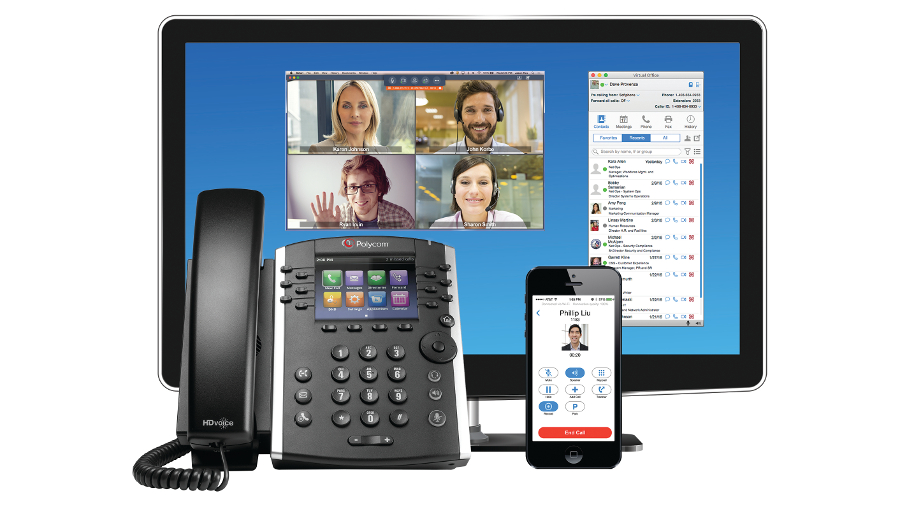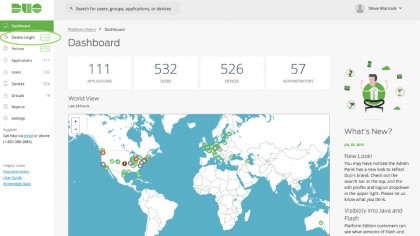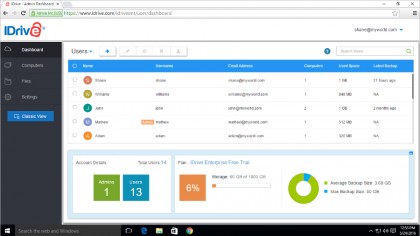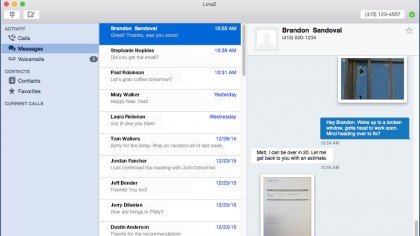6 emerging cloud services every business needs to know about
Adding value to your organisation via the cloud

Introduction

Keeping track of developments in the cloud can be a challenge and a half. Services seem to appear on the horizon without much fanfare, then glide overhead. Some seem to morph over time, becoming more of an enterprise tool or sashaying into the consumer market. It's also hard to know which ones actually add business value to your organisation, or are just a new offering.
Fortunately, there are a few that have emerged recently that are worth your time and investment. These services offer something new without the high ticket price and compete with established players like Salesforce and Dropbox.
They also integrate into IT operations easily and can scale as you grow. Each has a clear and understandable interface that does not require an IT degree to install. Which one will you deploy to solve a pesky problem?
- Also check out: The best business dashboards that help with productivity issues
1. Maestrano

QuickBooks users who also happen to run MYOB would never think those two apps could coexist in any form. A new cloud service launched in 2014, Maestrano, promises to fix that. The dashboard can pull data from disparate sources, but it's more than a viewer. You can see data and run reports that compare multiple business applications to help guide decision-making.
To see data from so many apps, you'd normally need an IT expert who is managing the deployment of apps for payroll, HR, inventory, customer management, email, and everything else. If the goal is decision-making, this cloud service means much less management but just as much data.
Benefits: One of the key advantages of this approach pertains to app management. It frees up IT staff to focus on other areas rather than constantly pulling data reports.
2. Duo Security

Cloud security is a new buzzword, mostly because of how quickly you can scale these services as a company grows. Duo Security provides two-factor authentication and it runs in the cloud, which means the security measures run independent of the actual app. The dashboard gives admins a wide-ranging look into the apps running and the user base. Duo has the added benefit of securing the cloud applications themselves, such as Google Apps, Box, Office 365, AWS, and Salesforce.
Sign up to the TechRadar Pro newsletter to get all the top news, opinion, features and guidance your business needs to succeed!
Known as the Duo Access Gateway (DAG), this service provides two-factor authentication that is not directly tied to the services. That means if a hacker manages to intercept the login info for a service, you'll still be protected because of the added layer Duo provides. In other words, having login information does not mean access.
Benefits: As we all know, security has to be robust but also easy for users. By separating the authentication, users only have to rely on one portal and not relearn every security practice.
3. IDrive Backup

Backup is a bit of a lost art these days, especially since so many of us trust that cloud services will keep an archive for us. Yet we still maintain local storage and forget to keep a cloud copy. That's where IDrive Backup comes in.
The service creates an archive of computers, servers, and devices. Enterprises with multiple departments can use the app companywide in a tiered storage system. For massive backups, there's an Express service that sends you a 3TB drive for backups and then still stores the data in the cloud for easy access.
Benefits: This app specifically aids those businesses that have decided to abandon backup plans because of the cloud and the complexity involved, especially for mobile devices.
4. 8x8 Virtual Office

This cloud-based business phone service has all of the features you'd expect, including call forwarding, voicemail, and routing. (For an extra fee, it can also include fax, call recording and web/video conferencing.) The main selling point of 8x8 Virtual Office is price savings. 8x8 says companies can typically save about 90% off the cost of a traditional PBX phone system and 50% of the cost of a business phone service.
Interestingly, the company has a service with which it sends out a technician to get everyone up and running, or you can do the install yourself (which is all software-based) but call in for guided help if necessary.
Benefits: The key benefit here are the 'office' features, not just adding lines for staff members. There's more of a PBX feel to the app for employee call forwarding and messaging.
5. GoodSync

GoodSync is a powerful syncing tool that keeps the same dataset on everything you run in your business, including computers, mobile devices, FTP, SFTP, Amazon S3, Google Drive, SkyDrive, WebDAV, and Microsoft Azure. It's this laundry list of services that makes it compelling.
The service can sync everything and anything, such as photos, financial documents, MP3 files, emails, laptops, servers, and external drives, and then 'propagate' any file deletions. For faster syncing, it uses a threading technique to spread the changes out to multiple services at once.
Benefits: Keeping all of the data on so many devices up-to-date can be a challenge. Each app is an island, but this cloud service unifies the approach even for enterprise apps.
6. Line2

Line2 is a phone cloud service that works on tablets, laptops, and even smartwatches. It has group conferencing, texting, multiple lines for one user, international calling, and many other services – but the key differentiator is the interface.
The app looks like it was designed by Apple. Contacts show up with a photo, you can quickly see how many calls you've missed and check text messages, and switch easily between the iPad version, your laptop, and a phone.
Benefits: Employees have access to a multitude of devices these days, and Line2 does the best job of making the service available on iOS, Android, and even smartwatches.
John Brandon has covered gadgets and cars for the past 12 years having published over 12,000 articles and tested nearly 8,000 products. He's nothing if not prolific. Before starting his writing career, he led an Information Design practice at a large consumer electronics retailer in the US. His hobbies include deep sea exploration, complaining about the weather, and engineering a vast multiverse conspiracy.
